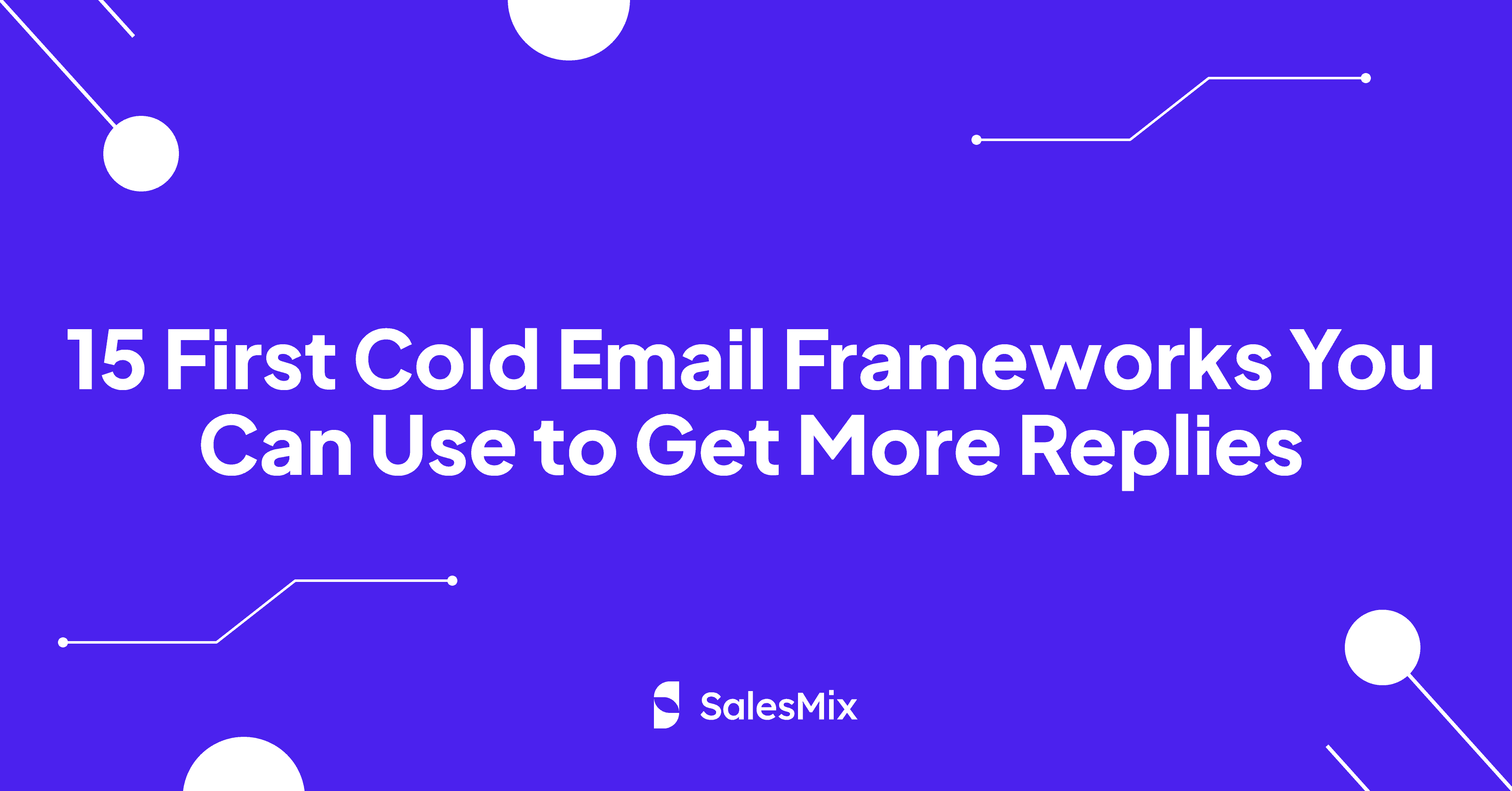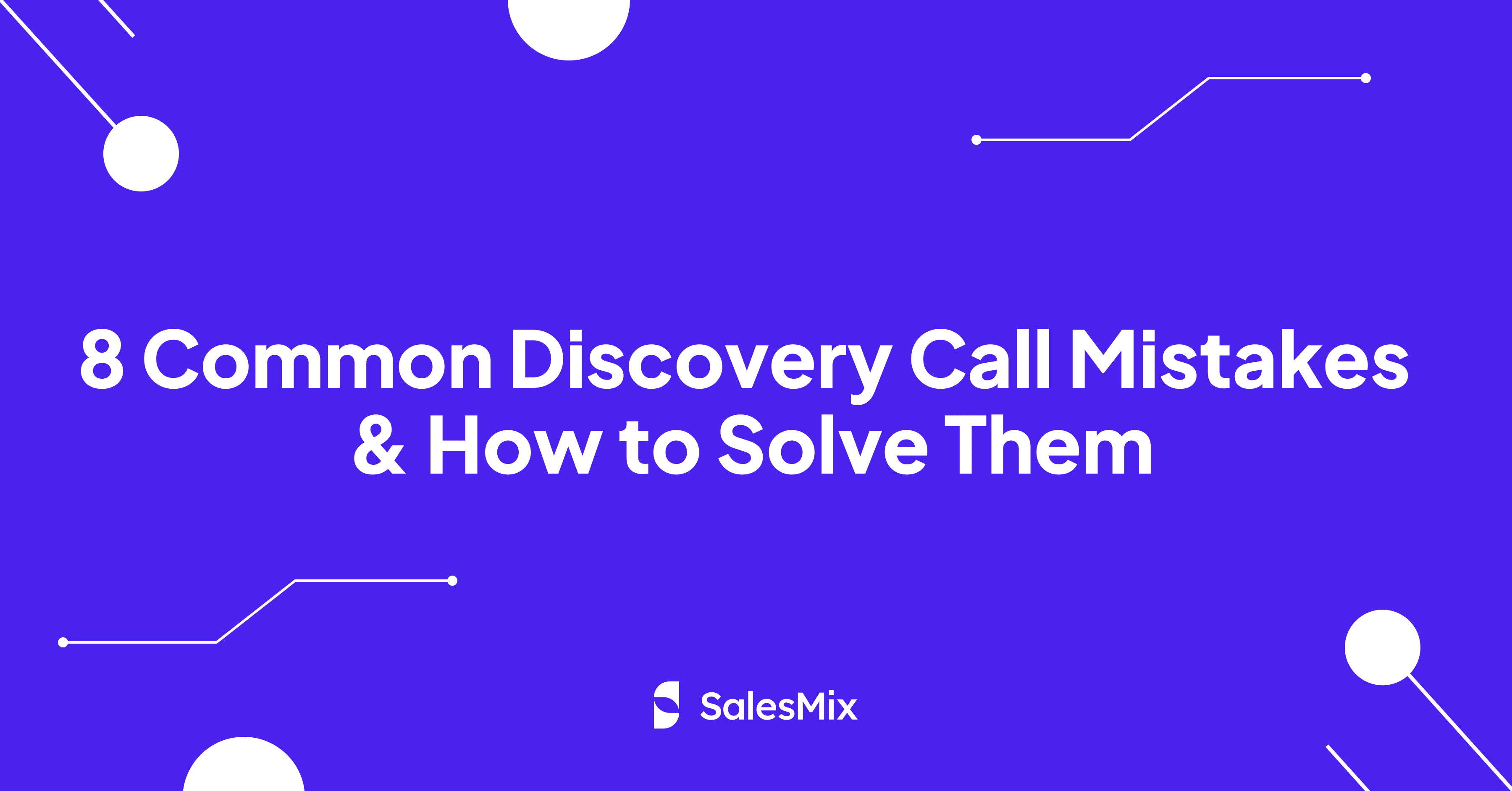Table Of Contents
Let’s be honest: sending the first cold email can feel intimidating. You spend time crafting the perfect message, only for it not to get the attention.
But here’s the thing: cold emailing isn’t about sending random pitches and hoping for the best. It’s about creating emails that connect, resonate, and make it easy for the prospect to reply. The key lies in structure. A well-structured cold email isn’t flashy or over-the-top. It’s clear, focused, and tailored to the recipient. You need to offer value and show that you actually understand their needs.
In this article, I will walk you through 15 proven first cold email frameworks that will help you improve your open rate.
1. Pain point + Case Study Strategy
You can start your email by addressing a specific pain point your prospect might be facing. Your cold email’s next part should have a case study of how your solution successfully solved this issue for a similar company, demonstrating relevance and credibility. We will see two templates for this strategy –
Template 1:
Hey {{firstName}}, are you experiencing {{pain point}} / how are you managing {{pain point}}?
The reason I’m asking is because we help {{job title}} at {{subniche}} solve {{pain point}} by {{offer}}.
Just recently, we helped {{case study}} achieve {{transformation}} in {{timeframe}} and made a quick video outlining how we’d do something similar for {{companyName}}.
Is this something of interest?
Why it performs well?
– Directly addresses a common issue (pain point).
– Provides a proven solution backed by a case study.
– Personalizes the approach to the recipient’s industry.
– Ends with a clear and engaging call to action.
Template 2:
Hi {firstName}, not sure if you’re struggling with {{pain point}}.
The reason I ask is we helped {{case study}} achieve {{transformation}} in {{timeframe}} and made a quick video outlining how we’d do something similar for {{companyName}}.
Mind if I share it here?
Why it performs well?
– Opens with a relatable pain point.
– Uses a real-life example to build credibility.
– Offers additional value with a personalized video.
– Concludes with an invitation for engagement.
2. The Lead Magnet Strategy
Offering value upfront with a lead magnet, such as a free guide, tool, or resource tailored to your prospect’s needs, builds trust and positions you as a helpful authority in your field.
Template:
Hey {{firstName}},
{Unique Mechanism} gets {Desired Outcome}.
Have you tried {Unique Mechanism} already?
{Something that they might be struggling with}
So we made a {Lead Magnet} that gets {Desired Outcome}.
Mind if I share?
Example:
Hey {{firstName}},
Lead Magnets get 5-10x more replies than standard cold emails.
Have you tried Lead Magnets in your own outbound campaigns?
Testing new email styles takes at least 4 or 5 attempts to perfect.
So, we made a template that gets 10+ meetings each week.
Mind if I share?
This is what your first cold email will look like in these best practices –
First cold email with lead magnet framework
Why it performs well?
– Introduces a unique method to achieve desired results.
– Engage the recipient with a question about their current practices.
– Addresses a potential struggle the recipient might have.
– Offers a valuable resource (lead magnet) to solve their issue.
3. Trigger > Question > Value > CTA
This approach lets you open with a compelling trigger (e.g., a market trend or insight), ask a relevant question to engage their interest, deliver immediate value with a solution or tip, and close with a clear, actionable CTA.
Example:
Subject line: Expenses
Tom,
Looks like your team’s growing quickly.
How’re you planning to have the expenses under control?
We help financial leaders comprehensively manage expenses, invoices, transfers, and more.
Curious to learn how?
Your email will look like –
Trigger > Question > Value > CTA Strategy Example
Why it performs well?
– Starts with a relevant trigger.
– Ask a thought-provoking question.
– Highlights the value proposition clearly.
– Ends with an engaging call to action.
4. Trigger > Question > Social proof > CTA
You need to start with a trigger to capture attention, pose a thoughtful question, and strengthen your pitch with social proof, such as client testimonials or metrics, before guiding them to act with a strong CTA.
Template:
Subject: Costs
Tom, saw you’re [specific trigger].
How are you making sure your expenses aren’t going above allowances and budget?
We helped XYZ Company achieve [specific result] in [timeframe]
Open to learning more?
Why it performs well?
– Uses a trigger to make the email relevant.
– Questions the current process to stimulate interest.
– Provides social proof to build credibility.
– Ends with an invitation to learn more.
5. Trigger > Agitation > Social proof > CTA
This approach hooks your prospect with a trigger, agitates their problem to highlight its impact, reinforces your credibility with social proof, and motivates them to act with a compelling CTA that aligns with their pain point.
Example:
Subject: Revenue loss
Hey Tom,
You have several open roles at your company. Usually, that means more difficulty,
complexity and costs when defining budgets and expenses for the year.
Not having it under control can drastically impact the margin gains.
We helped XYZ Company achieve [specific result] in [timeframe]
Worth a chat?
Your email will be like –
Trigger > Agitation > Social proof > CTA Strategy Example
Why it performs well?
– Begins with a relevant trigger.
– Agitates the pain point to emphasize the problem.
– Provides social proof to establish trust.
– Ends with a compelling call to action.
6. Statement > Social proof > CTA
Begin with a bold statement that directly addresses your prospect’s situation or industry challenge. Back it up with social proof, such as success metrics or testimonials, and finish with a clear CTA that drives action.
Example:
Subject: Finance
Curious how you’re managing your team’s expenses, Tom.
We helped XYZ Company achieve [specific result] in [timeframe].
Worth a conversation?
Why it performs well?
– Starts with a strong statement to capture interest.
– Uses social proof to back up the claim.
– Ends with a straightforward call-to-action.
7. Trigger > Focus > Challenge > Social proof > CTA
Use a trigger to grab attention, narrow the focus to their specific challenge, present the difficulty they face, and validate your solution with social proof. The ending is with a strong, actionable CTA.
Example:
Subject: Financial control
Hey Tom – It’s Q4. Usually, that means a focus on defining next year’s budget
CFOs often struggle with the time it takes to plan everything and not run over budget.
We helped XYZ Company achieve [specific result] in [timeframe].
Want to see how?
Why it performs well?
– Uses a timely trigger.
– Focuses on a common challenge.
– Provides social proof to demonstrate effectiveness.
– Ends with a clear call to action.
8. Observation > Solution > Social Proof > CTA
You can make an insightful observation about their industry or business before offering a tailored solution that addresses this observation. The latter stage of the email will focus on reinforcing it with credible social proof and closing with a direct CTA.
Template:
Hey [name],
As a [role], I was wondering how you ensure every employee is engaged & productive.
Asking because we developed a [specific solution/process] that helps reps [with specific performance KPI]
Companies like ACME & ACME1 increased their [X KPI] by 40%
Should we try it with [company]?
Why it performs well?
– Starts with a relevant observation.
– Introduces a solution to a common problem.
– Uses social proof to build credibility.
– Ends with a strong call to action.
9. Relevance > Question > Social Proof > CTA
Start by explaining why your outreach is relevant to them, ask an engaging question to stimulate curiosity, provide social proof to build trust, and finish with an actionable CTA to encourage engagement.
Template:
[name] – Are your reps creating cold emails manually and having an almost 0% reply rate?
We help reps increase their email-to-meeting-booked ratio by 25% with proven frameworks within cold emails.
Would this be something you’re looking to tackle?
Why it performs well?
– Relevant to the recipient’s situation.
– Questions current practices to provoke thought.
– Uses social proof to validate the solution.
– Ends with a call to action.
10. Problem > Items > Solution > Impact
Show a key problem your prospect faces, break it down into smaller components or pain points, propose your solution, and highlight the positive impact it will have on their business.
Template:
[name] – What sellers hate about their job is updating the CRM every single day.
Things like data entry, field updates, and adding notes are a never-ending loop.
Our solution enables your sales team to update and fill the CRM fields automatically without wasting hours, leaving them space to focus on what matters: sales!
Compatible with your existing system. This can free up to 6 hours per week for your team.
Sound relevant?
Why it performs well?
– Identifies a common problem.
– Lists related to pain points.
– Presents a clear solution.
– Highlights the impact on productivity.
11. Trigger > Social Proof > Achievement > CTA
The starting trigger needs to capture attention to lead you to offer social proof to establish credibility. After that, you can highlight a significant achievement your company or product has made and end with a clear and actionable CTA.
Template:
[name] saw that [company]’s latest blog post doesn’t include a Meta, which can affect its online visibility.
{{client}} improved theirs by creating meta tags using ChatGPT
Can I share how?
Why it performs well?
– Uses a relevant trigger.
– Provides social proof with a specific example.
– Highlights a significant achievement.
– Ends with a call to action.
12. Observation > Question > Problem > Solution > CTA
Make a thoughtful observation about their industry or business, ask a question to engage their curiosity, outline the problem they may be facing, present your solution, and finish with a strong CTA.
Template:
Hi [name], Saw y’all are hiring AEs.
Curious – how do you currently handle your ramp-up process?
Hear often from other VPs of sales that reducing the ramp-up time is always a challenge.
Our training program helps companies like yours to decrease by up to 50% at that time.
Opposed to hearing how we ACME do this?
Why it performs well?
– Starts with a relevant observation.
– Questions current practices.
– Identifies a common problem.
– Presents a solution and ends with a call to action.
13. Bold Statement > Solution > CTA
You need to open with a bold statement that challenges the norm or highlights a pressing issue, follow with your solution to address it, and guide them to act with a clear, compelling CTA.
Template:
Hey [name],
What Sales Reps often hate is the cold outreach response rate. Sending hundreds of emails, crafting personalized messages, and following up only for a meager 2% reply rate.
Our program solves this by allowing reps to send hyper-targeted emails, pushing response rates upwards of 15%.
Worth a chat?
Why it performs well?
– Begins with a bold statement to capture attention.
– Identifies a common pain point.
– Offers a clear solution.
– Ends with a call-to-action.
14. Question > Teaser > CTA > PS
You should start with an intriguing question to pique interest, offer a teaser about how your solution can help, provide a strong CTA, and include a PS to reinforce urgency or value.
Template:
[name], curious to know how you’re preventing your new hires from taking too much time to go through their onboarding.
If you’re interested, I can share a short, 1-pager we use to fix & reduce the onboarding process.
Sounds interesting?
PS: Saw you like football! I have one question, Messi or Ronaldo? *I’ll go with Messi!*
Why it performs well?
– Opens with a question to engage curiosity.
– Teases valuable content.
– Ends with a call to action.
– Adds a personal touch with a PS.
15. Trigger > Pitch > Solution > CTA
Begin with a relevant trigger to draw attention, present a concise pitch about your offer, introduce your solution with clear benefits, and close with an actionable CTA that prompts engagement.
Template:
[name], noticed you have over 50 open positions.
We help tech scale-ups reduce their new employee churn from 30% to 10% or less.
With a typical cost of mishire around $30,000 per employee, this would mean going from 15 bad hires to 5, resulting in $300,000 saved.
Sounds like something you’d check out?
Why it performs well?
– Uses a relevant trigger.
– Provides a clear pitch.
– Highlights the solution and its benefits.
– Ends with a call to action.
Conclusion
Cold emailing, at its core, is about building connections and starting meaningful conversations. The 15 frameworks discussed here give you a solid foundation to not only craft emails that get opened but also drive responses.
A mix of personalization, value delivery, and structured messaging can make a world of difference in your outreach efforts. The real magic happens when you move beyond just templates and start experimenting. Take these frameworks as starting points, but adapt them to your audience, industry, and goals.






